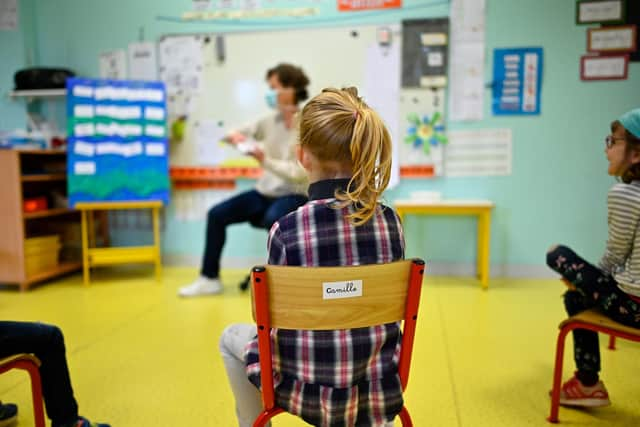Government’s rules on teachers wearing face masks with schools set to return on June 1
and live on Freeview channel 276
Teachers do not have to wear face coverings unless providing care for a child who has come into school with symptoms, the Prime Minister's official spokesman said.
"Our guidance on face coverings is clear, they are for enclosed public spaces where you come into contact with people you don't normally meet such as crowded shops or public transport.
"Schools do not fall into that category.
Advertisement
Hide AdAdvertisement
Hide Ad

"It is rare for a teacher to have to wear PPE, they should only be worn if providing close-contact care for a child with symptoms.
“Any child with symptoms shouldn't be going into school in the first place."
He added: "Safety comes first, but we also need to be aware of the potential damage to a child's education from not getting them back in the classroom.
"We are now passed the peak of the virus and it is right we plan for the first phase for the controlled and careful return for more pupils to school.
Advertisement
Hide AdAdvertisement
Hide Ad"It is not happening overnight and it won't happen without schools putting in place a range of measures to reduce transmission.
"Our approach has been to work with headteachers, teachers and the unions to consult with them in order to get a plan in place that allows children to go back to school safely."
Primary school class sizes should be limited to 15 pupils, desks should be spaced as far apart as possible and outdoor space should be utilised, under the new guidance.
The guidelines, from the Department for Education (DfE), advises schools to stagger lunch and break times, as well as drop-off and pick-up times, to reduce the number of pupils moving around.
Advertisement
Hide AdAdvertisement
Hide AdSchools should also consider introducing one-way circulation, or placing a divider down the middle of the corridor, to keep young people apart.
The advice, published by the department on Monday evening, suggests that nurseries and schools should remove soft furnishings and toys that are hard to clean - and try to keep children in the same small groups at all times each day.
Education settings which cannot achieve the small groups required due to limited classroom space or staff numbers should discuss options with their local authority or trust, the guidance says, adding that solutions might involve children attending a nearby school.
It comes after the Government announced its ambition for all primary school pupils in England to go back to school for a month before the summer.
Advertisement
Hide AdAdvertisement
Hide AdThe Government expects children to be able to return to nurseries and childcare settings, and for Reception, Year one and Year six pupils to be back in school, from June 1 at the earliest.
Teaching unions have warned that the plan is "reckless" and the ambition for all year groups to return to primary schools by summer is not "feasible"